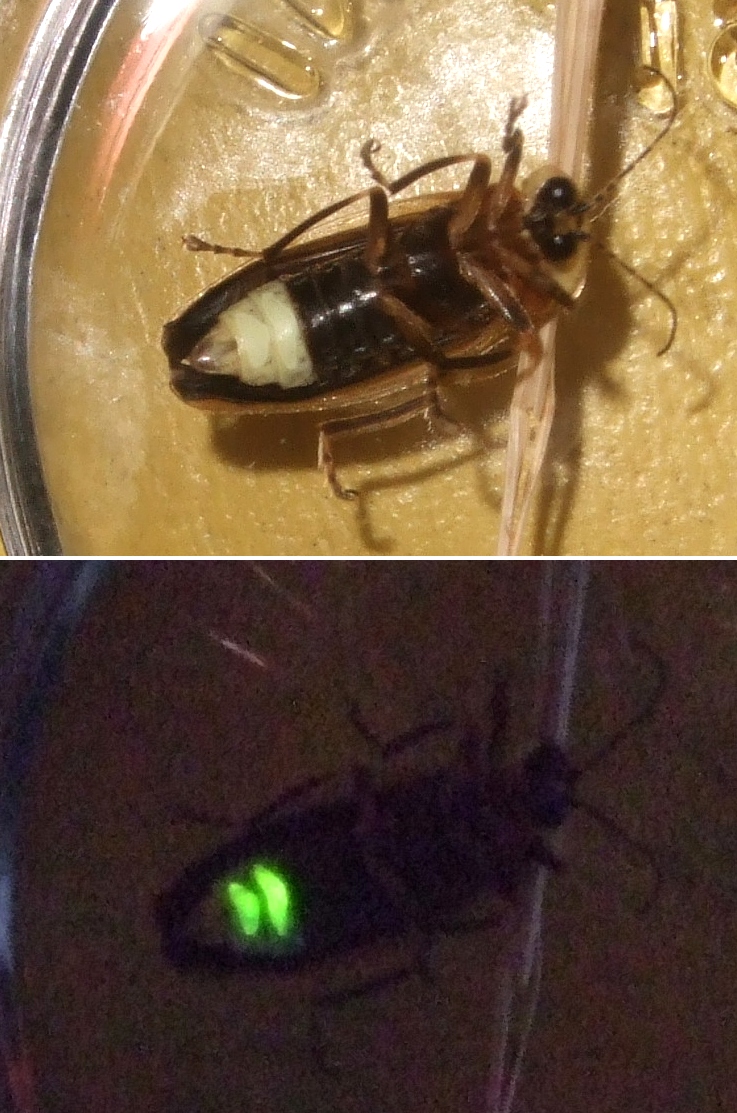|
Pleotomini
The Pleotomini are a tribe of fireflies in the large subfamily Lampyrinae The Lampyrinae are a large subfamily of fireflies (Lampyridae). The exact delimitation, and the internal systematics, have until recently been a matter of debate; for long this group was used as a " wastebin taxon" to hold any fireflies with insu .... Systematics The group has recently been examined using molecular phylogenetics, using fairly comprehensive sampling. Genera * '' Calyptocephalus'' Gray, 1832 * '' Ophoelis'' Olivier, 1911 * '' Phaenolis'' Gorham, 1880 * '' Pleotomodes'' Green, 1948 * '' Pleotomus'' LeConte, 1881 * '' Roleta'' McDermott, 1962 References Lampyridae Beetle tribes {{firefly-stub ... [...More Info...] [...Related Items...] OR: [Wikipedia] [Google] [Baidu] |
Lampyrinae
The Lampyrinae are a large subfamily of fireflies (Lampyridae). The exact delimitation, and the internal systematics, have until recently been a matter of debate; for long this group was used as a "wastebin taxon" to hold any fireflies with insufficiently resolved relationships. Regardless, they are very diverse even as a good monophyletic group, containing flashing and continuous-glow fireflies from the Holarctic and some tropical forms as well. The ancestral Lampyrinae probably had no or very primitive light signals; in any case several modern lineages appear to have returned to the pheromone A pheromone () is a secreted or excreted chemical factor that triggers a social response in members of the same species. Pheromones are chemicals capable of acting like hormones outside the body of the secreting individual, to affect the behavio ... communication of their ancestors independently.Stanger-Hall, Kathrin F.; Lloyd, James E. & Hillis, David M. (2007): Phylogeny of North Ameri ... [...More Info...] [...Related Items...] OR: [Wikipedia] [Google] [Baidu] |
Tribe (biology)
In biology, a tribe is a taxonomic rank above genus, but below family and subfamily. It is sometimes subdivided into subtribes. By convention, all taxonomic ranks from genus upwards are capitalized, including both tribe and subtribe. In zoology, the standard ending for the name of a zoological tribe is "-ini". Examples include the tribes Caprini (goat-antelopes), Hominini (hominins), Bombini (bumblebees), and Thunnini (tunas). The tribe Hominini is divided into subtribes by some scientists; subtribe Hominina then comprises "humans". The standard ending for the name of a zoological subtribe is "-ina". In botany, the standard ending for the name of a botanical tribe is "-eae". Examples include the tribes Acalypheae and Hyacintheae. The tribe Hyacintheae is divided into subtribes, including the subtribe Massoniinae. The standard ending for the name of a botanical subtribe is "-inae". In bacteriology, the form of tribe names is as in botany, e.g., Pseudomonadeae, based on the ge ... [...More Info...] [...Related Items...] OR: [Wikipedia] [Google] [Baidu] |
Fireflies
The Lampyridae are a family (biology), family of Elateroidea, elateroid beetles with more than 2,000 described species, many of which are bioluminescence, light-emitting. They are soft-bodied beetles commonly called fireflies, lightning bugs, or glowworms for their conspicuous production of light, mainly crepuscular, during twilight, to attract mates. Light production in the Lampyridae is thought to have originated as an honest signal, honest Aposematism, warning signal that the larvae were distasteful; this was co-opted in evolution as a mating signal in the adults. In a further development, female fireflies of the genus ''Photuris'' mimic the flash pattern of ''Photinus (beetle), Photinus'' species to trap their males as prey. Fireflies are found in temperate and tropical climates. Many live in marshes or in wet, wooded areas where their larvae have abundant sources of food. While all known fireflies glow as larvae, only some species produce light in their adult stage, and ... [...More Info...] [...Related Items...] OR: [Wikipedia] [Google] [Baidu] |
Subfamily
In biological classification, a subfamily (Latin: ', plural ') is an auxiliary (intermediate) taxonomic rank, next below family but more inclusive than genus. Standard nomenclature rules end subfamily botanical names with "-oideae", and zoological names with "-inae". See also * International Code of Nomenclature for algae, fungi, and plants * International Code of Zoological Nomenclature * Rank (botany) * Rank (zoology) In biological classification, taxonomic rank is the relative level of a group of organisms (a taxon) in an ancestral or hereditary hierarchy. A common system consists of species, genus, family, order, class, phylum, kingdom, domain. While ... Sources {{biology-stub ... [...More Info...] [...Related Items...] OR: [Wikipedia] [Google] [Baidu] |
Pleotomus
''Pleotomus'' is a genus of fireflies in the family Lampyridae The Lampyridae are a family (biology), family of Elateroidea, elateroid beetles with more than 2,000 described species, many of which are bioluminescence, light-emitting. They are soft-bodied beetles commonly called fireflies, lightning bugs, .... There are about five described species in ''Pleotomus''. Species These five species belong to the genus ''Pleotomus'': * '' Pleotomus cerinus'' Zaragoza, 2002 * '' Pleotomus davisii'' LeConte, 1881 * '' Pleotomus emmiltos'' Zaragoza, 2002 * '' Pleotomus nigripennis'' LeConte, 1885 * '' Pleotomus pallens'' LeConte, 1866 References Further reading * * * * * * Lampyridae Bioluminescent insects {{firefly-stub ... [...More Info...] [...Related Items...] OR: [Wikipedia] [Google] [Baidu] |
Lampyridae
The Lampyridae are a family (biology), family of Elateroidea, elateroid beetles with more than 2,000 described species, many of which are bioluminescence, light-emitting. They are soft-bodied beetles commonly called fireflies, lightning bugs, or glowworms for their conspicuous production of light, mainly crepuscular, during twilight, to attract mates. Light production in the Lampyridae is thought to have originated as an honest signal, honest Aposematism, warning signal that the larvae were distasteful; this was co-opted in evolution as a mating signal in the adults. In a further development, female fireflies of the genus ''Photuris'' mimic the flash pattern of ''Photinus (beetle), Photinus'' species to trap their males as prey. Fireflies are found in temperate and tropical climates. Many live in marshes or in wet, wooded areas where their larvae have abundant sources of food. While all known fireflies glow as larvae, only some species produce light in their adult stage, and ... [...More Info...] [...Related Items...] OR: [Wikipedia] [Google] [Baidu] |

